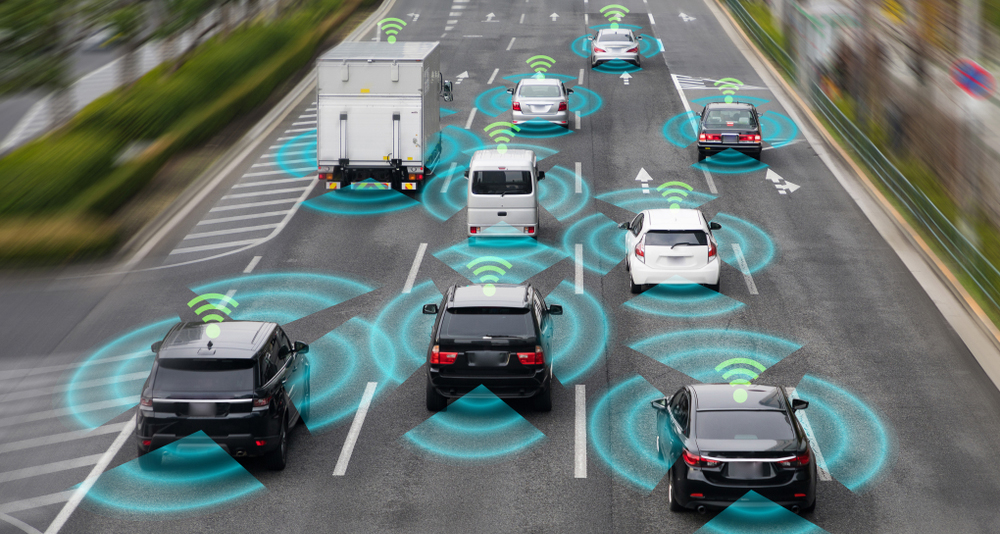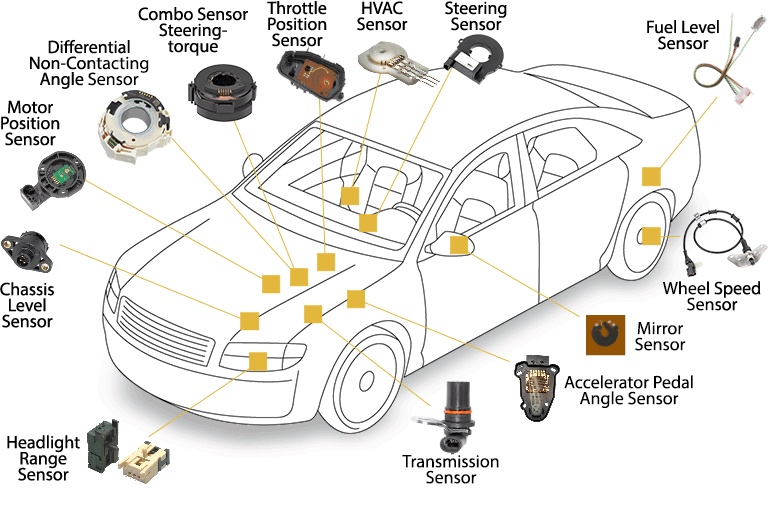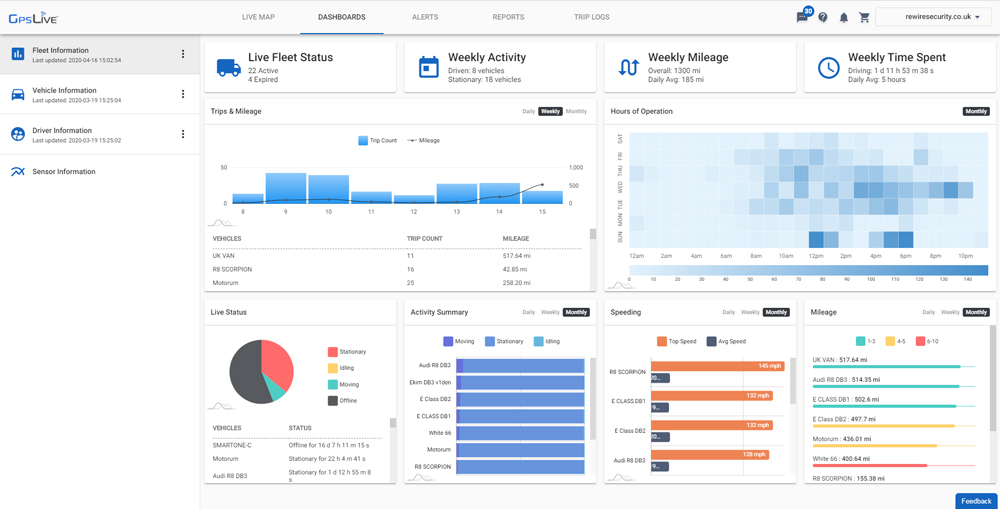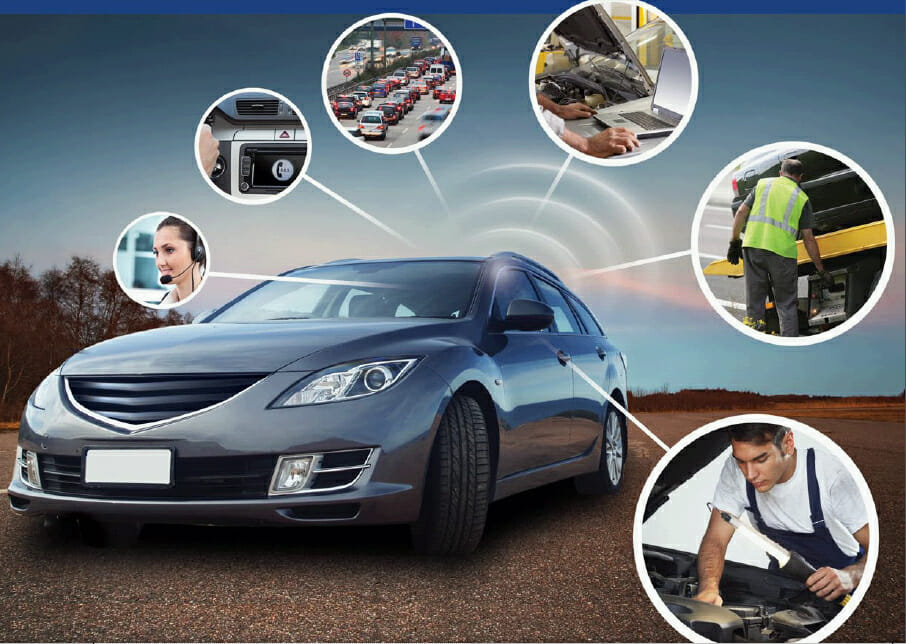Since its invention, GPS has been truly a gamechanger for aviation and transportation as well as all business industries. Especially tech companies have been using this revolutionary technology to develop and invent advanced systems that can calculate the position of objects and vehicles to collect essential data that can be used in managing business operations.Among these innovations, telematics systems are one of the most influential technologies that emerged in the last decades and they have reshaped entire business industries with the powerful tools they bring to the table.
Telematics is a combination of telecommunications and information processing that encompasses vehicular technologies, computer sciences, telecommunication systems and road transportation. These sophisticated systems are capable of sending, receiving and storing information about mobile objects such as vehicles via GPS tracking devices and similar telecommunication devices. The word “telematics” first appeared in a report by the French government about the computerization of society, they called it “telematique” which became telematics over time. Telematics encompasses telecommunications, vehicular technologies, road transportation and computer sciences. It is the technology of sending, receiving and storing information relating to remote objects via telecommunication devices.
There are various reports on how much the fleet telematics market will be worth in the upcoming years. The numbers are quite high; according to experts, the market for fleet telematics systems will be $43.5 billion by 2024. The news about telematics and automobiles are often related to the growth of telematics and consumer route-driven vehicles like cars and trucks. Telematics technology has paved the way for fleet managing systems for vehicles over the last years, which is important news for transport, delivery and utility businesses.

The market for fleet telematics systems is growing exponentially all over the world due to the massive impact they have over businesses, especially enterprises that operate vehicle fleets. Estimated with a market value around USD 30 billion in 2020, the telematics solutions are estimated to reach over USD 60 billion by 2025 while another research by McKinsey suggests that car-data-monetization trends and characteristics will reach a value pool as large as $750 billion by 2030. The incremental growth in numbers confirms that telematics systems will be one of the key components in managing business operations that involve mobile assets and vehicles. GPS and telematics technologies have paved the way for creating complex fleet management systems over the years, which quickly became essential tools for transport, delivery, utility and many more businesses. Now, let’s take a look at how these advanced systems function and help businesses improve their operational efficiency.

1 – Collecting Information
Telematics devices keep a complete log of momentary events and feed the tracking servers with real-time information such as speed, location, direction, odometer value, fuel consumption and vehicle status. GPS-based telematics devices can gather a vast amount of information about vehicles, especially if they are connected to the OBD-II socket embedded to the dashboard. Telematics devices can access the engine control unit which is basically the brain of the vehicle. ECU data is essential in determining the vehicles that require servicing and analysing driver-related issues such as the overuse of fuel between vehicles. Gaining access to actionable and accurate data such as GPS, telematics and ECU data allows executives to improve their decision-making process and introduce policies to contain unwanted driver habits.
2- Applications of Telematics Data
Telematics systems can be applied to all types of vehicles from lorries and vans to heavy machinery. The most common use of telematics is tracking the location of vehicles in real-time to improve the overall response time of vehicle fleets. If a fleet manager knows exactly where every car or truck is at all times, they can use telematics data to get an all-around image of how their fleet is performing in detail and identify alternative ways to improve their performance. Telematics systems can provide event alerts for specific situations and report the overall status of your fleet which can be utilised to improve gas mileage and reduce unnecessary idling times. Telematics devices can monitor and communicate the location of mobile assets, fuel consumption, driver behaviour and other information that can help a fleet manager to improve the efficiency of their fleet operations and maximize the productivity of their workforce.
3 – Resource Management
Regardless of the size of a business, operational resources are finite and they need to be managed properly for a company to be profitable. In fleet operations, drivers and mismanaged field operations are the main cause of resource waste such as fuel, time and work hours. Telematics systems provide the necessary platform for executives to oversee their operations down to the last detail. Driver performance reports, fuel usage reports and accurate time tracking allow managers to identify the causes of resource waste as well as how to distribute company resources more efficiently. With the help cloud-based telematics software and GPS-based telematics devices, companies can lower their operational costs significantly while amping up their productivity. Telematics systems can greatly increase the revenue generation and make a company more profitable with the tools they offer.
4 – Security Benefits
Even in the more developed parts of the world, asset and vehicle theft remain as one of the main issues for businesses. Mobile assets, vehicles and valuable equipment that are left at job sites are exposed to theft and if there are no security measures in place, an experienced thief can easily get away with a piece of expensive machinery or vehicle in a matter of minutes. Ordinary alarm systems are powerless against adept criminals but telematics systems are equipped with sensitive sensors that can notify the responsible parties about theft attempts and tampering instantly.
Geofence zones, movement and ignition alerts, driver recognition systems and many other safeguards can be put in place to detect and stop ongoing theft attempts or alert the local law enforcement agencies to recover stolen assets and vehicles. Criminals can’t move assets or vehicles out of the designated areas or drive away with them with a telematics system onboard without triggering multiple alarms. Business owners and managers can alleviate their fears knowing their vehicles, machinery and all types of assets are under constant surveillance and should someone attempt to steal them, the authorities will be immediately alerted.

5 – Integration of Telematics Systems
Most business owners tend to ignore the obvious benefits of telematics systems and focus on the integration costs as well as the time it takes to reap the benefits. GPS-based technologies such as telematics systems are easy to integrate into the existing infrastructure of a business model and provide a return in ROI almost immediately. By accessing the telematics data and real-time location of vehicles, field managers can eliminate the factors that cause the company to waste resources such as fuel and manpower which directly results in a decrease in operational costs rapidly. It may take some time for drivers to get used to having a tracking device onboard their vehicles but they will also see the benefits of having an advanced telematics device inside their vehicle with increased efficiency for work orders and much faster response times to emergencies with real-time geolocation capabilities. Business managers gain access to a treasure trove of information regarding their drivers, vehicles and their performances that can affect the revenue generation and profitability of a company drastically. Given enough time, telematics systems basically pay for themselves and by then, a company will be generating multiple times of income while spending a lot less on fuel, overtime payments and repairs.
6 – Customer Relations
In today’s technological age, customers demand to be informed every step of the way while they expect their deliveries and shipments to arrive on-time in tip-top shape. This may have been a problem in the past but with the powerful informative tools telematics systems offer, it is a child’s play. Fleet managers can provide their customers with location updates and route information in real-time and give them an accurate ETA of their cargo with almost no margin for error. GPS and telematics technologies have completely changed the relationship between customers and companies; with near-instant notifications and information updates, customers can plan for the arrival of their shipments accordingly. The constant information flow increases customer satisfaction and improves the planning process that will result in retaining the existing customers and expanding the customer base with the greatly increased quality of service.
According to a research conducted by RAC Business, almost 40% of all businesses in the UK are using telematics systems and across all industries, 68% of companies saw a reduction in fuel usage while 55% saw a reduction in wear and tear and 48% stated that there was a reduction in downtime for their vehicles. There are many more statistics associated with the benefits of telematics systems and how they are instrumental in reducing overall costs and improving the efficiency of businesses. Telematics solutions can be the difference in growing your business or trying to keep up with your expenses. Rewire Security offers advanced GPS-based telematics systems that can help you save valuable resources and increase your revenue through productivity. Operating a fleet may have significant costs but with the information available through telematics devices, you can make sure that your vehicles are safe, properly maintained and generate the highest revenue possible within the allotted timeframe.




